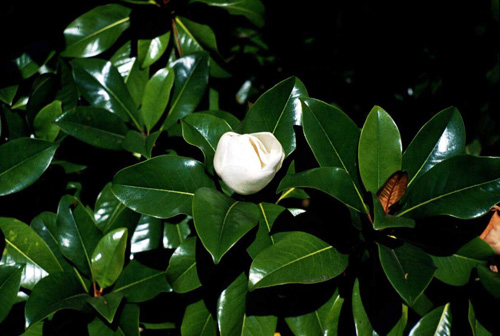Magnolia grandiflora ‘Victoria’
southern magnolia


© Briggs Plant Propagators

© Briggs Plant Propagators
Outstanding Qualities
This tree is among the grande dames of the southern United States; however, not all specimens are hardy outside its native range. The cultivar 'Victoria' is a selection that is known for being cold hardy in the Pacific Northwest. Large flowers, with a pleasing lemon fragrance, nestle among the glossy evergreen leaves in early to mid-summer. The foliage of this tree is not only shiny above, but there is a rusty-red fuzzy covering underneath which is very attractive.
Quick Facts
Plant Type: tree
Foliage Type: evergreen
Plant Height (10-year): 18 ft. 0 in. (5.49 meters)
Plant Width/Spread (10-year): 12 ft. 0 in. (3.66 meters)
Plant Height-Mature: 30 ft. 0 in. (9.14 meters)
Plant Width-Mature: 25 ft. 0 in. (7.62 meters)
Hardiness: USDA Zones 7 to 9
Flower Color: white
Sun/Light Exposure: full sun to light or open shade
Water Requirements: occasional to regular watering during dry months
Wildlife Associations: birds
Culture Notes
This evergreen magnolia is easy to grow. It flowers best when planted in full sun to light or open shade. It will thrive in a rich moist to well-drained soil, but will tolerate sand and clay if the drainage is adequate. Southern magnolia branches can break in the snow, although this cultivar is resistant to this. On young plants carefully brush off snow. If any limbs do break on the tree, prune out to provide a clean wound for quick and proper healing. Regular summer water will allow the best flowering and healthiest growth, but well established plants can tolerate occasional watering during dry weather. Magnolias have fleshy roots that can easily be damaged so limit extensive gardening under established trees. Little pruning is required other than removing dead and broken limbs or poorly formed limbs. Pruning is best done after flowering.
Text and photos ©2020 Great Plant Picks/Elisabeth Carey Miller Garden except where otherwise noted
Funded by the Pendleton and Elisabeth Carey Miller Charitable Foundation, The Seattle Times, and Individual Donors
Administered by the Elisabeth Carey Miller Botanical Garden
